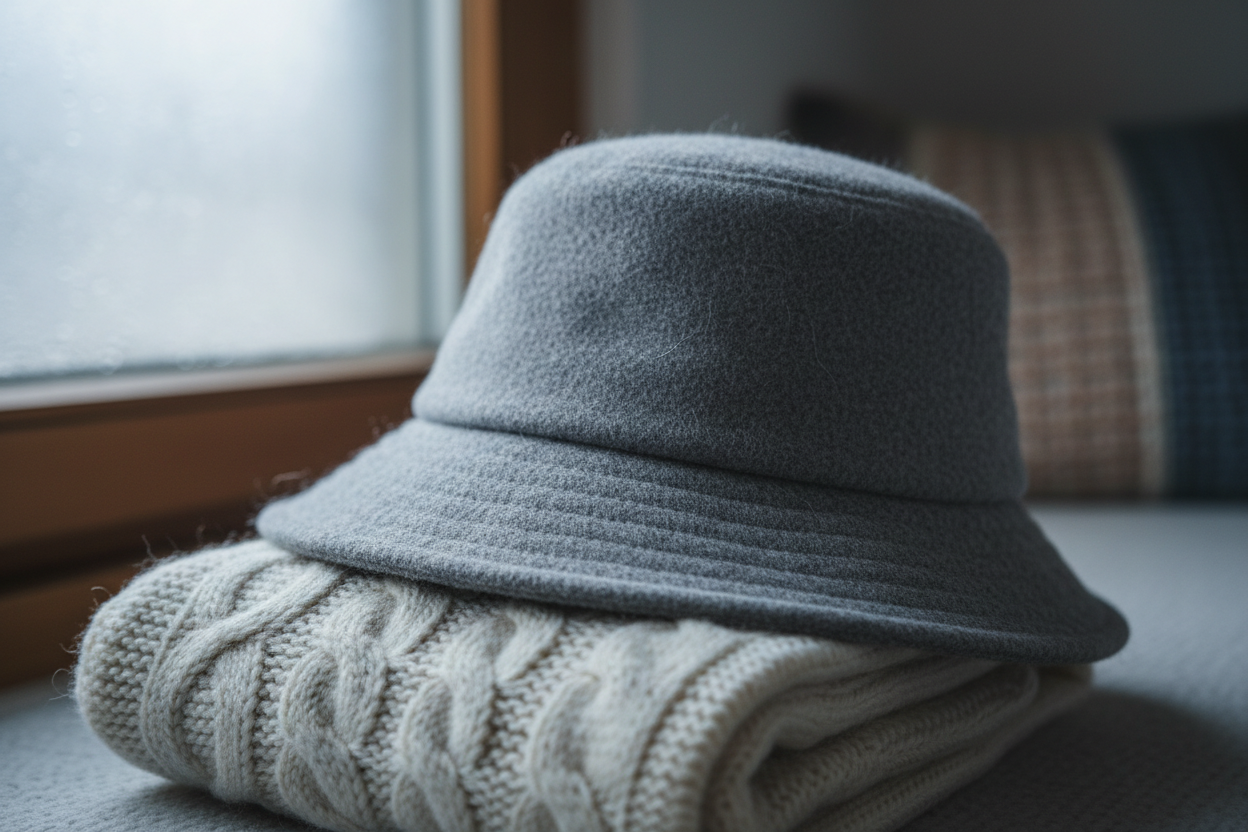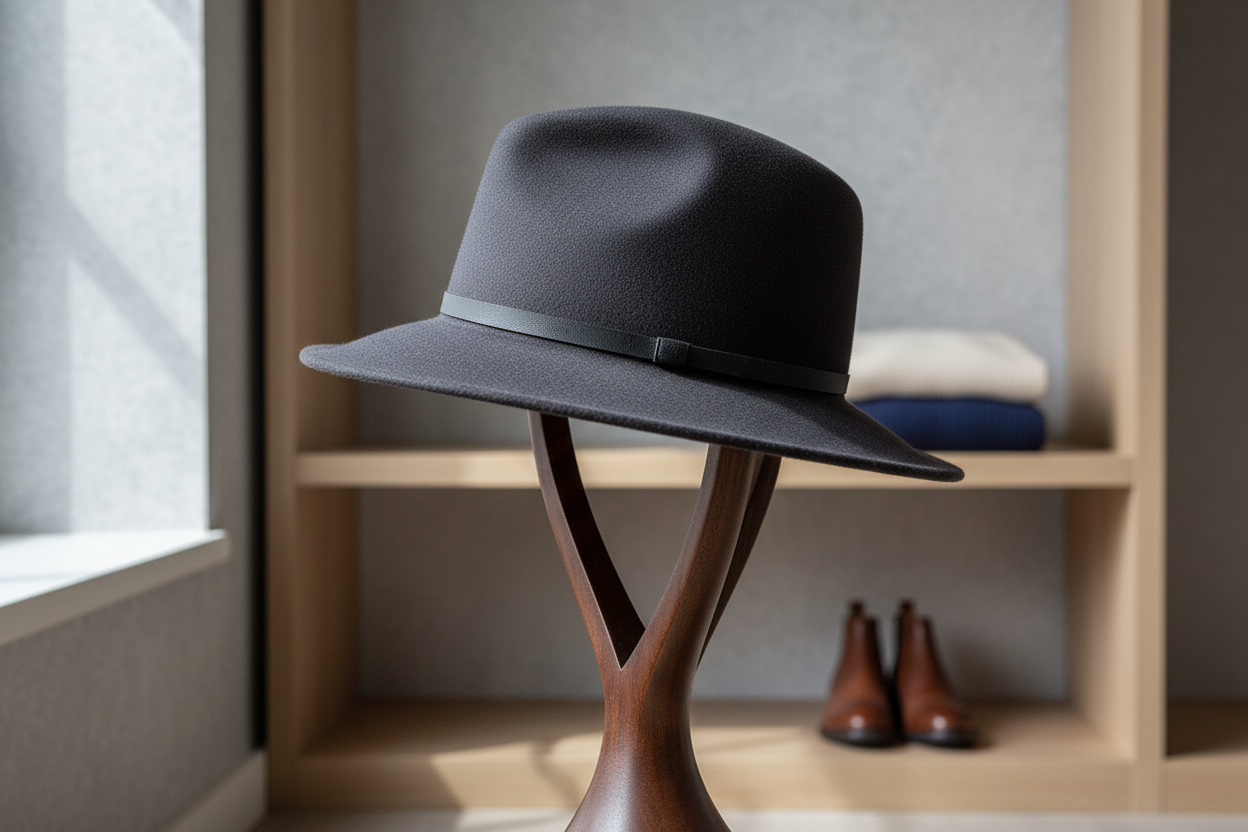When winter's icy breath starts nipping at your ears, a trusty winter hat becomes your best ally. But what makes one winter hat better than another? The answer often lies in the materials and qualities that each hat is made of. In this guide, we'll unravel the secrets behind the insulation materials that make winter hats your ideal companions in the chilly months. So, let's embark on this cozy journey together.
Before you choose a material, skim the 5 Rules of Essential Hat Care.
The Role of Materials in Warmth
Before we dive into the specifics, let's understand why the material of your winter hat matters. The material plays a significant role in determining how warm and comfortable your hat will keep you. Different materials possess unique insulating properties that can make all the difference in those bone-chilling days.
Wool: Nature's Insulator
When it comes to classic warmth, wool is the go-to choice. Wool hats are like a warm embrace from Mother Nature herself. The natural insulation properties of wool ensure that it retains heat efficiently while still allowing your skin to breathe. For wool caps, Hat Strips absorb sweat, block stains, and fight odors making maintenance easier.
Wool hats are incredibly versatile. Whether you're taking a casual winter stroll, hitting the slopes, or attending a formal winter event, wool has you covered. Plus, they don't lose their warmth even when they get a little wet.
Fleece: Softness Meets Warmth
If you're a fan of soft, cozy winter hats, fleece is your jam. These hats are as light as a snowflake and feel like a plushy cloud on your head. Fleece is well-known for its moisture-wicking properties, meaning it keeps you snug without making you feel like you're wearing a space helmet. And just like wool, fleece holds onto its warmth even when it's a bit damp.
Washes less, smells better—add the Fresh Set Bundle between wears.
Down: Light as a Feather, Warm as a Hearth
For those who want to stay toasty without feeling like they're lugging around a brick on their head, down hats are the answer. These hats are filled with duck or goose down feathers, making them incredibly warm without the weight. You could be trekking through the Arctic or simply want to look stylish in sub-zero temperatures; down hats have your back.
Synthetic Insulation: Warmth That Outlasts Winter Showers
Winter can be a wet affair in many places, but synthetic insulation materials like Thinsulate™ and PrimaLoft® have got you covered. These materials are light, durable, and don't mind a bit of moisture. So, whether you're building snowmen or hiking in a light drizzle, these hats will keep you warm and dry.
Sherpa Lining – Cozy Comfort Redefined
Sherpa lining is like having a soft, fluffy cloud caressing your head. These hats redefine comfort with their plush interior. Sherpa-lined hats are perfect for casual winter outings, providing an extra layer of coziness to your style.
GORE-TEX®: Defying Winter's Worst
Sometimes, winter isn't just cold; it's wet. That's where GORE-TEX® hats shine. Not only are they warm, but they are also waterproof and breathable. You can stay dry and snug, no matter how hard the elements try to challenge you.
After slush days, a Premium Hat Brush lifts dried salt and grime.
Alpaca – The Exotic Warmth Seeker's Dream
For those who seek luxury and exotic warmth, Alpaca wool is the answer. It's warmer, softer, and less scratchy than regular sheep's wool. Alpaca hats offer excellent insulation properties and natural temperature regulation. You'll be turning heads with this unique material.
Balancing Style and Substance
Now that we've covered the ins and outs of different materials, it's essential to remember that style and substance can go hand in hand. Choosing a winter hat that combines insulation with fashion is crucial. Different materials can cater to various fashion preferences, so you can stay both warm and stylish.
Hat Accessories for Extra Warmth
Sometimes, it's not just about the hat itself; it's about the ensemble. Accessories like earflaps, scarves, and gloves can complement your winter hat, adding extra layers of warmth and style. Don't forget to coordinate and accessorize to your heart's content.
Winter Hat Etiquette: When, Where, and How
Wearing a winter hat is not just about staying warm; it's also about doing it right. Understanding when and how to wear your winter hat in different settings is crucial. Let's delve into the dos and don'ts of winter hat etiquette, so you're always on-point with your winter look.
Go Forth in Warmth
In the grand scheme of winter fashion, your choice of materials for your hat plays a pivotal role in your comfort and style. Whether you opt for the classic warmth of wool, the softness of fleece, or the featherweight efficiency of down, you now have the knowledge to make the coziest choice. So, venture out into the winter wonderland, stay warm, and conquer the season with the perfect hat for your needs.
Ready for winter? Explore Cap Care Bundles.
FAQs
Q1. What's the warmest material for a winter hat?
The warmest material for a winter hat is often down, known for its exceptional warmth-to-weight ratio.
Q2. Can I wear a wool hat in the rain?
Wool hats can be worn in light rain, as they retain warmth even when damp. However, for heavy rain, consider a GORE-TEX® or synthetic insulated hat.
Q3. Do Alpaca hats really regulate temperature naturally?
Yes, Alpaca hats have natural temperature-regulating properties, making them comfortable in various weather conditions.
Q4. What's the best winter hat for extreme cold?
For extreme cold, down hats are an excellent choice due to their exceptional insulation.
Q5. How do I care for my winter hat to ensure it lasts?
See the 5 Rules of Essential Hat Care for quick storage and cleaning tips.”
To extend the life of your winter hat, follow the care instructions provided by the manufacturer. Most wool and fleece hats are machine washable, but down and Alpaca hats may require special care. Always store your hat in a cool, dry place when not in use.




